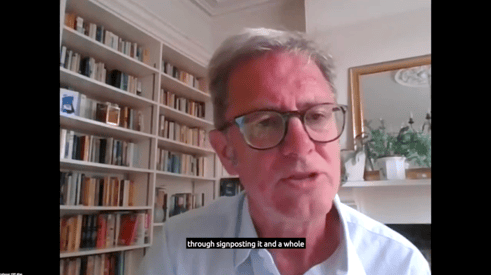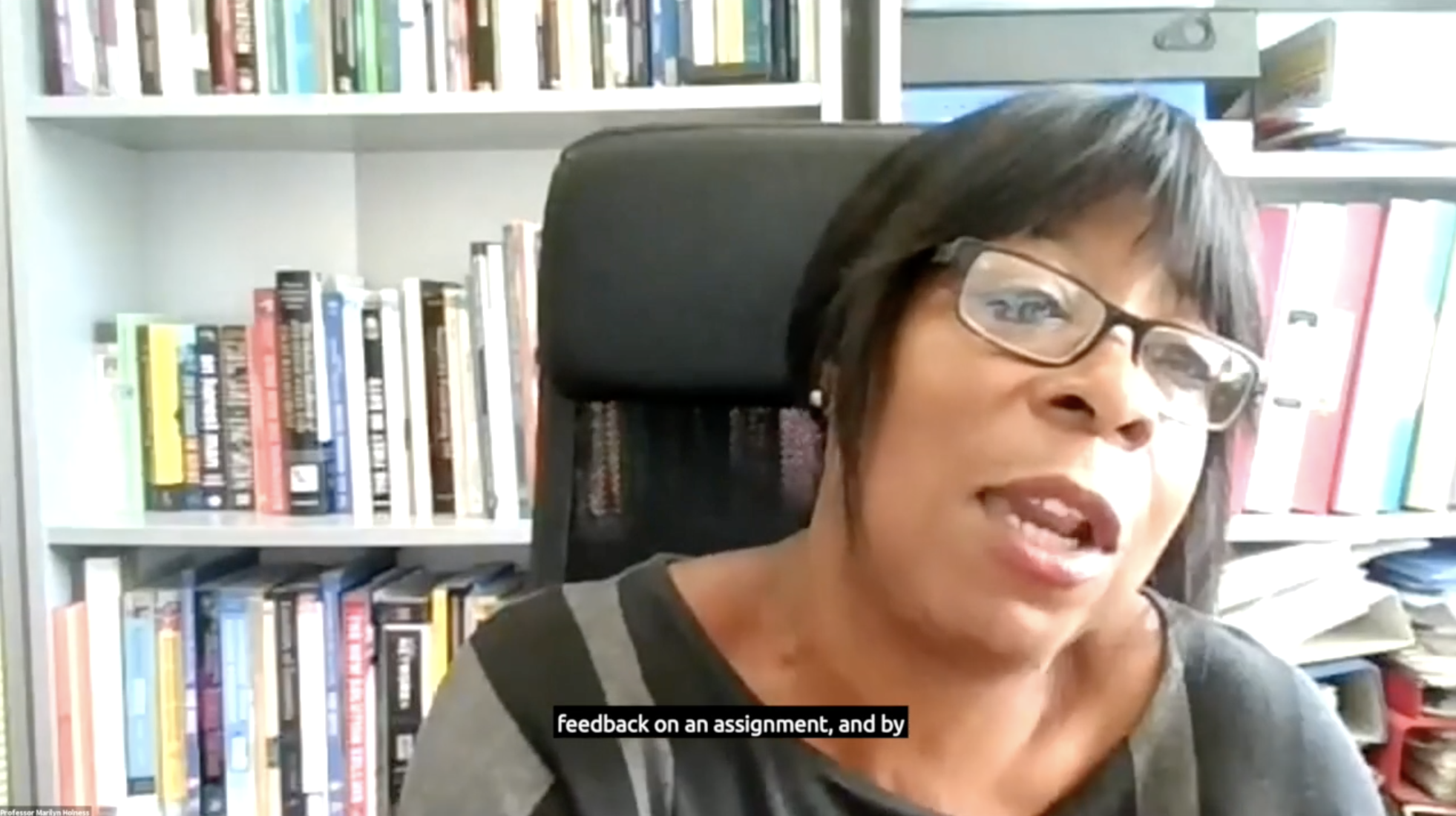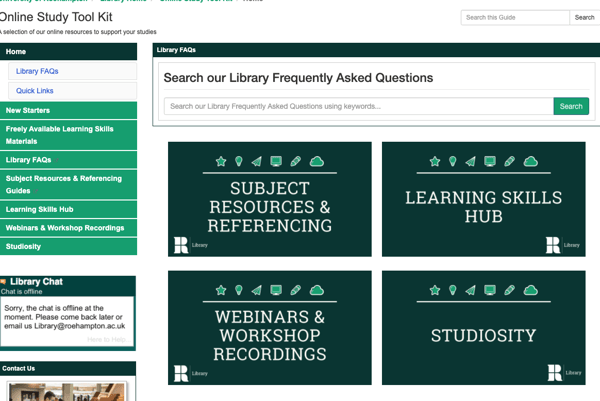
How do you engage hard-to-reach students? Normalise help-seeking - let the whole cohort model the behaviour - because it's something that everyone does, and needs. Professor Holness describes in detail Roehampton's best practice approach, for integrating formative feedback into assessment, and integrating support into the student experience.
The University of Roehampton uses Studiosity as part of an ecosystem of support, with academic teams as the backbone. The university proactively advances student support broadly across the institution, which allows for insight into help-seeking by non-traditional and hard-to-reach students, relative to the cohort. Interestingly, the University's data agrees with formal studies into student demographics - particularly non-traditional, international, and online students - for instance, by the University of New England and La Trobe University and others.
Unsurprisingly, given their integration of support and communications, Roehampton has one of the highest levels of student engagement with Studiosity - globally. The following summary is from just five minutes of an in-depth, one hour conversation with Marilyn and our panel of higher education experts. Find the link to the full webinar recording at the end of this post.
Prof Cliff Allan: How do we engage those who are not yet fully engaged in the need for study help? For example, Liz Thomas' research shows that mature students seem to be using the service pretty well. But male students much less so. So, is this the experience at the University of Roehampton? And how are you trying to engage students who may not be seeking the sort of study help services yet, who probably do need to?
Prof Marilyn Holness: Yes, you're so right, and that is such an important issue about how we reach the 'hard to reach'.


At Roehampton, working with Studiosity is just one element of the student support and engagement work that we do. But it's been one of our key activities as part of the work we've been doing during lockdown.
Liz [Prof Thomas] talks about institutions looking at their own data sets and what it will mean. So it's been really useful to help us to inform the approach as we re-work the support, and as we start gearing up for the new year.
It's worth noting, first of all, this is our first year using Studiosity and we've got no benchmarks. I know that from the data sets, we've got one of the highest levels of engagement of the universities using it, in our first year. So that's not saying that we're getting it right, it's just saying that we're going in the right direction.
We've got one of the highest levels of engagement of the universities using it, in our first year.
So our approach has been, obviously, trying to engage all of our students. That was including our hard-to-reach students and it's part of this proactive approach that we've been using, that looks like: academic guidance, tutoring, and working with our Academic Achievement Teams.
From the very outset - when we started the academic year last year, using [Studiosity] for the first time - we publicised it.
- We presented [Studiosity] - and packaged it - as part of formative assessment, that students could use when they'd written their first piece of work and they had a draft... within the first three, four, five weeks of the term. [See also: Dr Mollie Dollinger's advice on pre-submission feedback.]
- We flooded social media, working with our student union, working with all of our academic staff, but we just talked about this as just a way of working, it was just another one of the tools available to students, to help them achieve and realise success, to get the best from their learning experience.
- We put out lots of information around induction, around the freshers and refreshers.
- We put a lot of work into identifying Studiosity reps so that we had students who move around and put this information out to other students so they knew what it was.
- It was really important to be clear what it did, what it can do, what it doesn't do and making sure that we could meet expectations.
Working on your essay from home? Pulling an all-nighter?
— Uni Roehampton Lib (@UR_Library) March 25, 2020
Ta-da! Studiosity to the rescue!
You can find the link via the Library Catalogue homepage. It is available 24/7. To find out more, sign up for free! 😉@RoehamptonSU @RoeRightNow @UR_ECW @RoehamptonEdu pic.twitter.com/a9mhZYvobA
We presented [Studiosity]...as part of formative assessment, that students could use when they'd written their first piece of work, when they had a draft.

Considerate student comms, smart UX, and offering another feedback tool to academic and professional staff
Prof Marilyn Holness: It's an ongoing tool that students use alongside working with academic guidance tutors, their academics and the Academic Achievement Team.
- We embedded Studiosity into the Moodle dashboard so that every time the students go on to their Moodle site, the information is there.
- We embedded it into the library, so every time they went on to the library site, there was information about it.
- We promoted it in academic guidance sessions, the Academic Achievement Teams promoted it and had it as an add on, giving feedback on an assignment, and "by the way, have you used Studiosity, remember it can do this for you, remember, it can do that for you..."
- Making sure the students and staff knew that it was there, knew very clearly what it could do and what it couldn't do.
- It was also built into the range of support what we had, so that all of our support staff also knew that it was part of the offer, and would direct students and signpost students to it.
Studiosity was also built into the range of support we had, so that all of our support staff also knew that it was part of the offer and could direct students to it.
Using behavioural data, to encourage help-seeking in non-traditional student cohorts
Prof Marilyn Holness: The data that we get back from Studiosity allowed us then to start thinking about targeted campaigns towards students. That is, we were able to know more about our student population.
At Roehampton, there's lots of intersections between [cohorts]. So our students who happen to be at - say - lower IMD [Indices of multiple deprivation] may also be BAME [a UK demographic referring to Black, Asian, and minority ethnic] students.
For example, nearly 40% of students who were using Studiosity were non-traditional, and of that group, what we found is more than half of them ended up with a grade of 60 or higher.
For example, nearly 40% of students who were using Studiosity were non-traditional, and of that group, what we found is more than half of them ended up with a grade of 60 or higher.
So we were able to look at particular groups - our mature students, first in their family. Nearly 60% of our students who use Studiosity were first in their family to go to university. So data will help to support more targeted campaigns as we start this academic year, looking at last year's trends and starting to use that to get the benchmark to take it forward.
Marilyn Holness, OBE, is Professor of Education Engagement and Practice and Director of Student Engagement, PFHEA, at the University of Roehampton.
Roehampton students, find your Studiosity access in Moodle, or search Roehampton, here.
Sincere thanks to Prof Holness for your time and insight. View the full webinar video.
